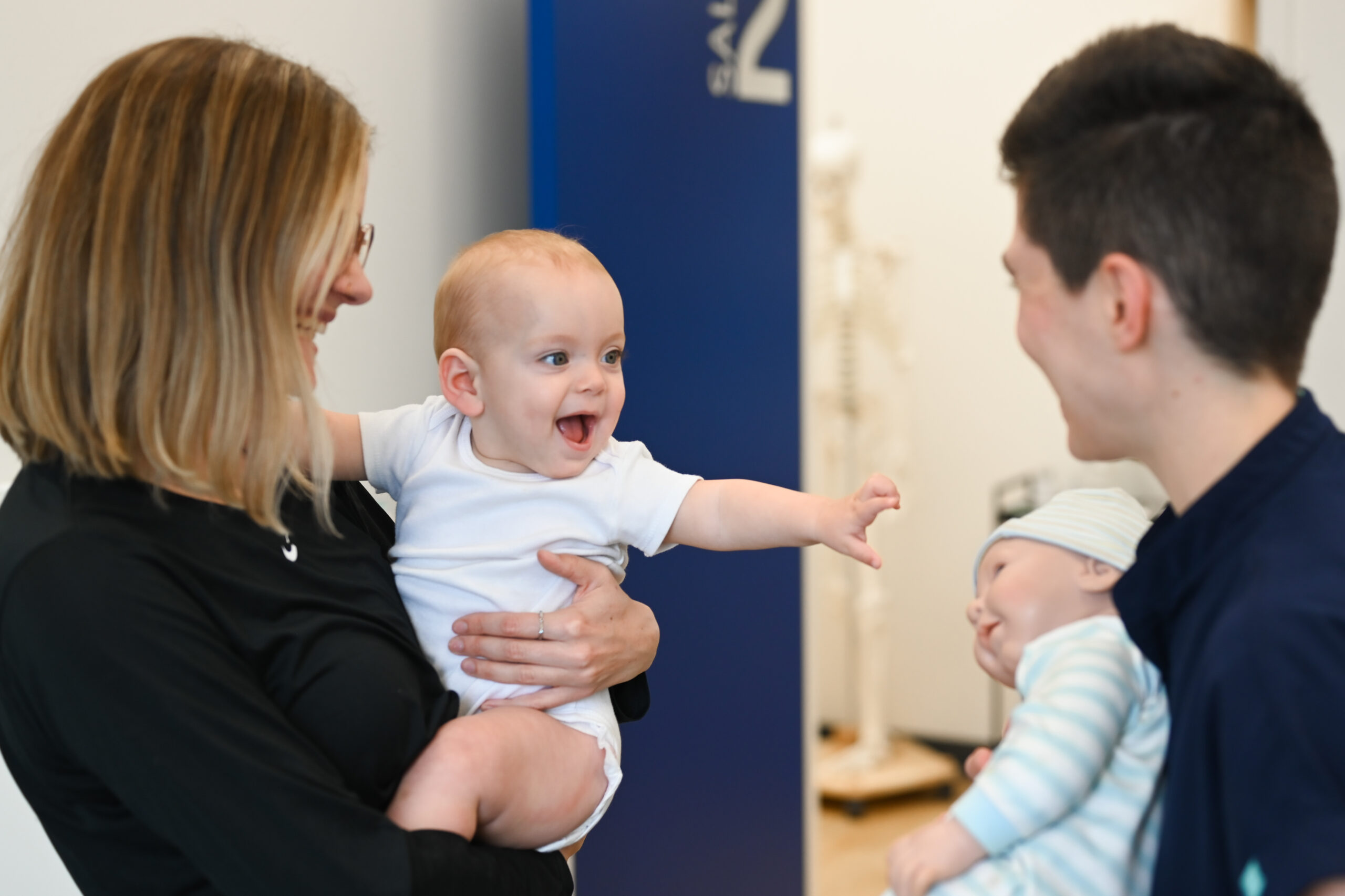
Pediatrics
Infants suffering from congenital torticollis or from plagiocephalycan benefit from services adapted to their condition.
Congenital torticollis is a pathology found in babies that is often detected in the first months following their birth. A baby with congenital torticollis has a noticeable preference when positioning their head in a left or right rotation while simultaneously inclining their head in the opposite direction. The exact cause of congenital torticollis is still unknown. It is believed that the baby’s’ position in the uterus or a muscular trauma when giving birth can cause this pathology. Neck asymmetry caused by the torticollis can cause further asymmetries or a delay in the baby’s motor development. It is therefore essential to ensure adequate monitoring of the baby’s’ motor development.
Plagiocephaly is a condition characterized by the flattening of one side of the baby’s’ skull. This pathology can be the cause or the consequence of the baby’s head positioning preference. A baby’s skull is made up of fibrous material called sutures that, over time, harden and close the skull bones together. Thus, it is possible for the bones to retake their original position before hardening which diminishes the magnitude of the flattening of the head. In addition to skull aesthetics, plagiocephaly can delay the baby’s motor development and can cause asymmetries. An infant having both plagiocephaly and congenital torticollis is not unusual.


